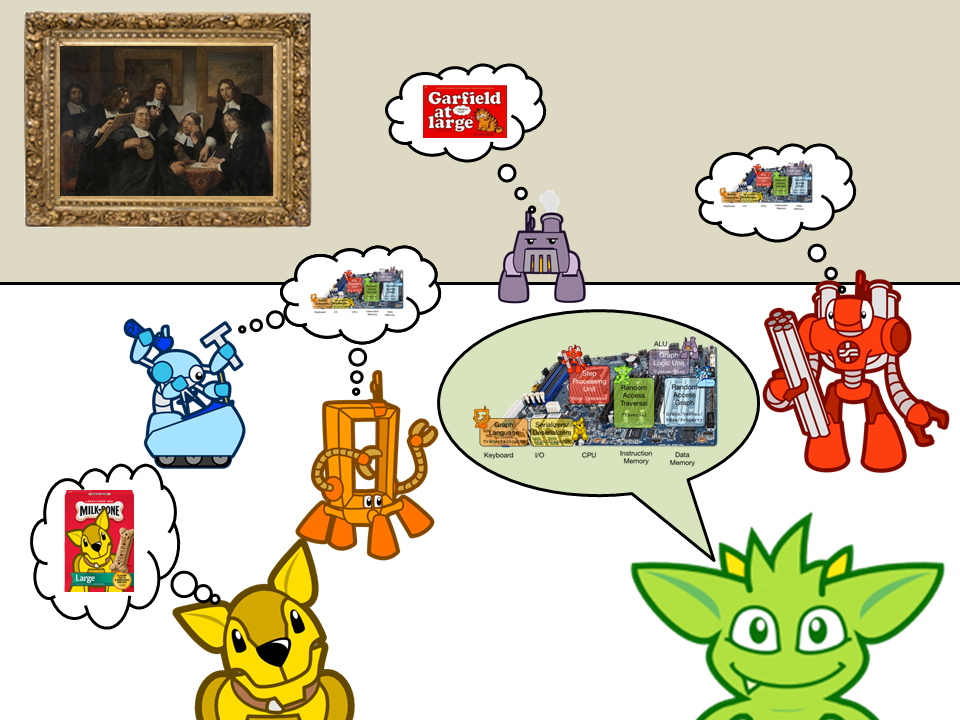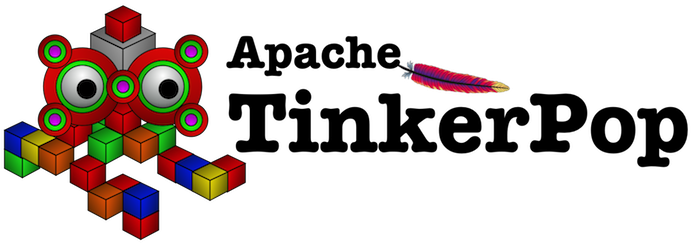TinkerPop 4.x Design Ideas
TinkerPop 4.x is not a version considered on the immediate horizon, but there are often points in the day to day development of TinkerPop 3.x where there are changes of importance, novelty and usefulness that are so big that they could only be implemented under a major new version. This document is meant to track these concepts as they develop, so that at some point in the future they can be referenced in a single place.
There is no particular layout or style to this document. Simple bullet points, open questions posed as single sentences, or fully structured document headers and content are all acceptable. The main point is to capture ideas for future consideration when 4.x becomes the agenda of the day for The TinkerPop.

The Main Features
TinkerPop4 should focus on the most successful aspects of TinkerPop3 and it should avoid the traps realized in TinkerPop3. These items include:
-
The concept of Gremlin as both a virtual machine and language.
-
A standard bytecode specification should be provided.
-
A standard machine architecture should be provided.
-
-
The concept of Gremlin language variants.
-
It should be easy to create Gremlin variants in every major programming language.
-
A standard template should be followed for all languages.
-
Apache TinkerPop should provide variants in all major programming languges.
-
-
The concept of
Traversalas the sole means of interacting with the graph.-
The role of Blueprints should be significantly reduced.
-
The role of Gremlin should be significantly increased.
-
Hiding Blueprints
Originally from the mailing list:
Throughout our documentation we show uses of the “Blueprints API” (i.e. Graph/Vertex/Edge/etc. classes & methods) as well as the use of the Traversal API (i.e. Gremlin).
Enabling users to have two ways of interacting with the graph system has its problems:
-
The DetachedXXX problem — how much data should a returned vertex/edge/etc. have associated with it?
-
graph.addVertex()andg.addV()— which should I use? The first is faster but is not recommended. -
SubgraphStrategyleaking — I get subgraphs with Gremlin, but can then directly interact with the vertex objects to see more than I should. -
VertexProgrammodel — I write traversals with Traversal API, but then develop VertexPrograms with the Blueprints API. That’s weird. -
GremlinServer returning fat objects — Serializers are created property-rich vertices and edges. The awkward HaltedTraversalStrategy solution.
-
… various permutations of these source problems.
In TinkerPop4 the solution might be as follows:
There should be two “Graph APIs.”
-
Provider Graph API: This is the current Blueprints API with
Graph.addVertex(),Vertex.edges(),Edge.inVertex(), etc. -
User Graph API: This is a ReferenceXXX API.
The first API is well known, but the second bears further discussion. ReferenceGraph is simply a reference/dummy/proxy
to the provider Graph API. ReferenceGraph has the following API:
-
ReferenceGraph.open() -
ReferenceGraph.close() -
ReferenceGraph.tx()// assuming we like the current transaction model (??) -
ReferenceGraph.traversal()
That is it. What does this entail? Assume the following traversal:
g = ReferenceGraph.open(config).traversal()
g.V(1).out(‘knows’)ReferenceGraph is almost like a RemoteGraph (RemoteStrategy) in that it makes a connection (remote or inter-JVM)
to the provider Graph API. When g.V(1).out(‘knows’) executes, it is really sending the bytecode to the provider Graph
for execution (as specified by the config of ReferenceGraph.open()). Thus, once it hits the provider’s graph,
ProviderVertex, ProviderEdge, etc. are the objects being processed. However, what the traversal’s Iterator<Vertex>
returns is ReferenceVertex! That is, it never returns ProviderVertex. In this way, regardless if the user is
going “over the wire” or within the same JVM or against a different provider’s graph database or from
Gremlin-Python/C#/etc., all the vertices are simply ‘reference vertices’ (id + label). This makes it so that users
never interact with the graph element objects themselves directly. They can ONLY interact with the graph via
traversals! At most they can ReferenceVertex.id() and ReferenceVertex.label(). Thats it, — no mutations, not
walking edges, nada! And moreover, since ReferenceXXX has enough information to re-attach to the source graph, they
can always do the following to get more information:
v = g.V(1).out(‘knows’).next()
g.V(v).values(‘name’)This split into two Graph APIs will enables us to make a hard boundary between what the provider (vendor) needs to implement and what the user (developer) gets to access.
Comments
There is a question mark next to ReferenceGraph.tx() - Transactions are a bit of an open question for future versions
of TinkerPop and likely deserve their own section in this document. The model used for last three version of TinkerPop
now is rooted in the Neo4j approach to transactions and is often more trouble than it should be for us and providers.
Distributed transactions are a challenge and don’t apply to every provider. Transactions are further complicated by
GLVs. The idea of local subgraphs for mutations and transaction management might be good but that goes against having
just ReferenceGraph.
